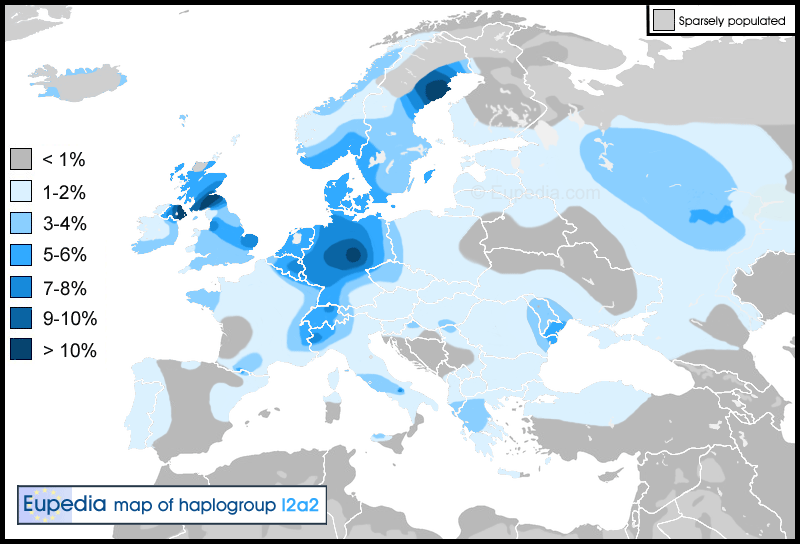I made this R1b migration map mostly on the basis of linguistic data. I believe that both R1a and R1b folks survived LGM in the same geographical region (the Iranian Plateau) and before expansion in Eastern and Western Europe they were culturally pretty much close (language, oral traditions, technology etc). So if we presume that R1a and R1b folks before expansion were speakers of closely related languages we can reconstruct their migration routes by similar linguistic traces.
I analyzed IE words used for designation of settlements and sorted out those words that can be found in all IE branches reliably connected with spread of R1a haplos:
toch.B.:
kwaṣo – village,
ike – settlement, Lithuanian:
kaimas - settlement, village, Latvian:
ciems – settlement, village,
ēka – house, Greek:
oîkos – house,
oikismo – settlement, Phrygian:
gava – region, place, Tajik:
khona – house, gothic:
оium –>*
o(h)um – country.
So migration of R1b folks can be traced down by presence of cognates of R1a words for settlements. I believe that wide spread in South Europe (Spain, South France and Italy) place names ending in
-asco, -asca, -usco, -osco, -osca, -inco,-inca are in fact R1b cognates of words
kwaṣo, ike,
kaimas, ciems, ēka, oîkos, oikismo, gava,
khona, *
o(h)um.
So in my opinion primary expansion zone of West European subclades of R1b folks should correlate with spread of place names ending in
-asco, -asca, -usco, -osco, -osca, -inco,-inca.

And in this case an entry point for European R1b folks (~R1b-L151) should be somewhere in Corsica.







